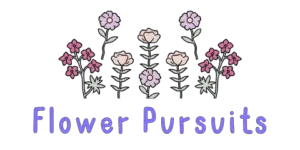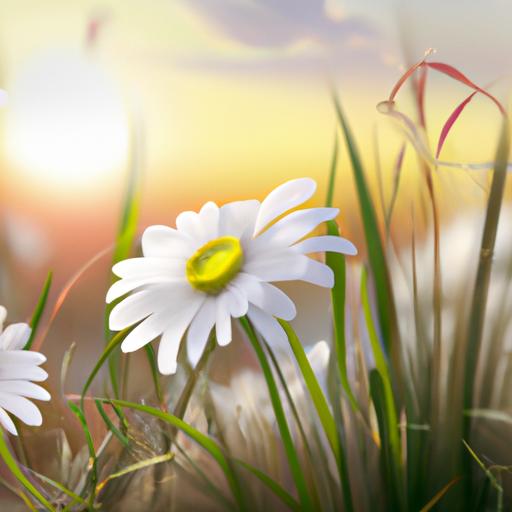Have you ever found yourself wondering if there is a difference between aster and daisy flowers? Even though they both look like beautiful blooms, there are some distinct differences between the two.
In this article, we will explore what makes asters and daisies different from one another in terms of their appearance, size, color, and growing conditions.
We will also discuss how to use each of these flowers in gardens and bouquets.
Read on to learn more about aster and daisy flowers!
Table of Contents
Short Answer
Aster and daisy flowers are both members of the Asteraceae family, but they are not the same flower.
Asters are known for their star-shaped flowers, while daisies feature a central yellow disc surrounded by white petals.
Asters can come in a variety of sizes, shapes, and colors, while daisies are typically only available in white and yellow.
Asters usually bloom in the late summer and fall, while daisies typically bloom in the spring and summer.
What is an Aster?
An aster is a flowering plant from the family Asteraceae, which is native to much of the Northern Hemisphere.
Asters are herbaceous perennials, meaning they will return year after year, and are popular for their vibrant colors and long blooming season.
They have a star-shaped appearance with long, thin petals that can come in a variety of colors, including white, pink, purple, blue, and yellow.
Asters are usually larger in size than daisies and reach heights of up to 3 feet with a spread of up to 18 inches.
They prefer full sun and moist soil, making them ideal for garden beds and borders.
Asters are a great choice for gardeners looking to add color and texture to their outdoor space.
What is a Daisy?

Daisy flowers are part of the Asteraceae family, and are one of the most recognizable and beloved flowers in the world.
Daisies are often seen as a symbol of innocence, purity, and faithfulness.
They come in a variety of sizes and colors, but most commonly are found in white, yellow, and pink.
Typically, daisies have a round shape with short, broad petals and a yellow center.
Daisies have a long blooming season, making them popular for gardeners, bouquets, and flower arrangements.
When it comes to growing conditions, daisies prefer plenty of shade and well-drained soil.
They can also tolerate a wide range of temperatures, making them a great choice for many climates.
Differences in Appearance
Aster and daisy flowers may look similar at first glance, but they actually have some distinct characteristics that differentiate them.
Asters are more star-shaped, with long, thin petals that form a distinct point at the end.
Daisies, on the other hand, have a more rounded, circular appearance, with shorter and broader petals that form a dome-like shape.
In terms of size, asters tend to be larger and come in a wide variety of colors, from bright pinks and purples to more subtle whites and blues.
Daisies, however, are typically smaller and usually come in white, yellow, or pink.
Both flowers have a long blooming season, making them popular additions to gardens and bouquets.
However, they require different growing conditions in order to thrive.
Asters prefer full sun and moist soil, while daisies need plenty of shade and well-drained soil.
Furthermore, asters tend to be more versatile when it comes to soil type, while daisies prefer more acidic soils.
This means that if youre looking for a flower that can grow in a variety of conditions, asters are a great choice.
Differences in Size

When it comes to size, there is a distinct difference between asters and daisies.
Asters are usually larger in size and can range anywhere from two to six inches in diameter.
They also tend to have more elongated petals that are thin and pointed.
In contrast, daisies are typically smaller, with a diameter of only one to three inches.
Their petals are also shorter and wider, giving them a more circular appearance.
When it comes to color, asters come in a variety of shades such as pink, purple, blue, and white.
The colors can often be found in combination, creating a unique and beautiful display.
Daisies, on the other hand, are usually just white, yellow, or pink.
The size and color variations between asters and daisies can be quite striking.
For instance, a bouquet of asters will look much more vibrant and eye-catching than a bouquet of daisies.
This makes asters a popular choice for adding a touch of color to gardens and bouquets.
Daisies, on the other hand, can be used to create a more subtle and understated look.
Differences in Color
When it comes to color, asters and daisies have some notable differences.
Asters come in a wide variety of colors, including white, pink, purple, lavender, blue, and red.
Some species even have striped petals in two or more colors.
Daisies, on the other hand, are much more limited in their color range.
The most common daisy colors are white, yellow, and pink, though some more rare varieties can be found in other shades.
No matter which type of flower you prefer, youll be sure to find one that suits your color scheme.
Asters are also generally larger than daisies, so if youre looking for a bigger bloom, an aster may be the way to go.
Daisies, on the other hand, are smaller and more delicate, making them perfect for smaller bouquets or as accents in larger arrangements.
The size difference can also be a great way to differentiate between asters and daisies when gardening.
Differences in Growing Conditions

When it comes to growing conditions, asters and daisies have distinct needs.
Asters, a type of composite flower, prefer full sun and moist soil in order to thrive.
This means they need at least four to six hours of direct sunlight each day and they should be watered regularly, but not overly saturated.
On the other hand, daisies need plenty of shade and well-drained soil to do their best.
While daisies can tolerate a bit of sun, they do best in shadier conditions.
Additionally, daisies should not be over-watered as they are prone to root rot when the soil is too wet.
If youre looking to add these flowers to your garden, make sure to pick the right location and soil type for each of them.
How to Use Asters and Daisies in Gardens and Bouquets
When it comes to gardens and bouquets, asters and daisies are both popular choices.
Each flower has its own unique beauty and charm, making them the perfect addition to any outdoor space or floral arrangement.
Asters are larger and come in a variety of colors, making them an eye-catching choice for gardens and patios.
They prefer full sun and moist soil, so make sure to pick a spot in your garden that gets plenty of sunlight and water.
Daisies, on the other hand, are smaller and usually come in white, yellow, or pink.
They require plenty of shade and well-drained soil, so choose a spot that gets some shade during the day.
In terms of bouquets, both asters and daisies make a beautiful addition.
Asters are especially stunning when used in large arrangements, as their star-shaped petals can create a unique and eye-catching display.
For a smaller bouquet, daisies are a great choice.
Their smaller petals and circular shape create a delicate and romantic look.
Both flowers also have a long blooming season, making them perfect for any occasion.
No matter which flower you choose, asters or daisies, they will add a special touch to your garden or bouquet.
With their unique characteristics and beauty, these two flowers will bring a little bit of sunshine and joy to any outdoor space or floral arrangement.
Final Thoughts
Asters and daisies may look similar, but they have many distinct characteristics that make them unique.
Asters are larger, star-shaped flowers with longer petals and prefer full sun and moist soil.
Daisies are smaller, circular flowers with shorter petals and need plenty of shade and well-drained soil.
Both flowers make excellent additions to gardens and bouquets, but they require different growing conditions in order to thrive.
With this knowledge, you can now choose the right flower for your garden or bouquet and enjoy the beauty and color of these two wonderful blooms.

